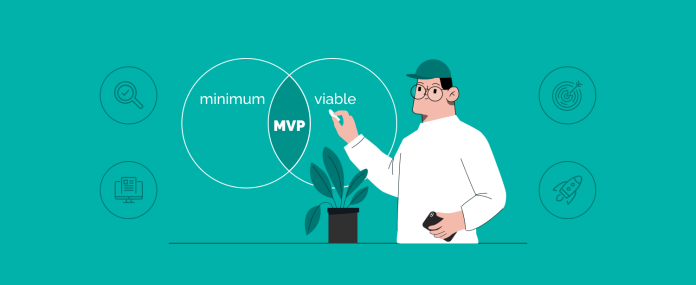Creating an MVP (Minimum Viable Product) and launching a website are crucial first steps for any startup. An MVP lets you test your idea with minimal resources, while a website serves as your digital storefront, helping potential customers understand your value. The best part? You don’t need advanced coding skills to make this happen. With no-code tools and the right approach, you can build and launch both quickly.
In this guide, I’ll take you through the exact steps to create an MVP and a website for your startup. By the end, you’ll know how to validate your idea, get user feedback, and attract early adopters—all without breaking the bank.
What Is an MVP and Why Should You Start There?
An MVP is a simplified version of your product that focuses on solving one key problem for your users. It’s the quickest way to bring your idea to life and see if it resonates with your target audience.
Why build an MVP first?
- Validate your idea: Test whether people are willing to use or pay for your product before fully committing to development.
- Save money and time: Avoid wasting resources on unnecessary features by starting small.
- Improve with feedback: Gather insights from real users to refine your product.
- Attract investors: A working MVP demonstrates your startup’s potential to investors.
For instance, let’s say you want to build an app to connect pet owners with local groomers. Instead of creating a full-featured app, your MVP could focus on a simple booking system. Once users validate this feature, you can expand with reviews, payments, or additional services.
How to Build Your MVP Step by Step
1. Define the Problem and Your Target Audience
Before building your MVP, clarify the problem you’re solving. What pain point are you addressing? Who are your users? This step sets the foundation for everything else.
For example, if your idea is a budgeting app for students, the problem could be that students find it hard to track spending on a tight budget. Your target audience would be students aged 18–25.
Write down your problem statement and identify your audience’s needs. This clarity helps you focus on building a product people actually want.
2. List the Core Features
An MVP isn’t about packing in every feature you can think of. Instead, focus on the essentials. Ask yourself:
- What features directly solve the user’s problem?
- What can I leave out for now?
For the budgeting app, core features might include:
- Adding expenses.
- Categorizing them (e.g., food, rent, entertainment).
- Viewing a basic spending summary.
Keep it simple. Features like notifications or advanced analytics can come later.
3. Choose the Right Tools
Now that you know what to build, it’s time to pick the tools. No-code platforms are perfect for MVP development because they let you focus on your idea instead of coding. Here are some great options:
- Bubble: Ideal for building web apps with drag-and-drop functionality.
- Airtable: Great for creating databases and simple workflows.
- Glide: Perfect for mobile app MVPs.
If you’re not comfortable building it yourself, you can work with an MVP development agency. These agencies specialize in turning ideas into functional products quickly and efficiently.
4. Build Your MVP
With your tools in hand, start creating your MVP. Here’s a simple process:
- Create a wireframe: Sketch out how your app or website will look. Tools like Figma can help you map the user flow.
- Build the core features: Focus only on the key functionality identified earlier.
- Test the MVP: Share it with a small group of users to gather feedback and fix any bugs.
This approach ensures you deliver a working product that solves a real problem.
How to Launch a Website for Your Startup
Your website is the face of your startup, so it needs to leave a strong impression. Thankfully, building a website today is easier than ever, thanks to no-code platforms like Webflow.
1. Plan Your Website’s Purpose
Before diving into design, decide what you want your website to achieve. Is it for showcasing your MVP? Attracting early adopters? Gathering email sign-ups? Having a clear goal ensures your website stays focused.
2. Use the Right Website Builder
Webflow is one of the best no-code tools for building websites, offering both flexibility and a professional finish. It’s perfect for startups looking to create modern, responsive sites without hiring developers. If you’re short on time or want a polished result, consider hiring a Webflow development agency to handle the design and development for you.
3. Focus on Essential Pages
Your website doesn’t need to have dozens of pages. Start with these basics:
- Home Page: Explain your product and its main benefit.
- About Page: Share your story and mission.
- Contact Page: Let users reach out easily.
You can always add more pages later, but these essentials are a great starting point.
4. Optimize for SEO and Mobile
A good website isn’t just about looking great—it needs to perform well too. Optimize your site for SEO by using relevant keywords, adding alt text to images, and writing clear meta descriptions. Make sure your site is mobile-friendly since most people browse on their phones.
5. Test and Launch
Before going live, test your website thoroughly. Check for broken links, ensure pages load quickly, and review the design on both desktop and mobile devices. Once you’re satisfied, publish your site and start promoting it!
Conclusion
Building an MVP and launching a website for your startup doesn’t have to be complicated or expensive. By focusing on the core problem, using no-code tools, and starting small, you can validate your idea and reach your audience faster. Whether you choose to build everything yourself or work with experts like an MVP development agency or a Webflow development agency, the key is to start now and improve as you go.
Your startup journey begins with taking that first step, so don’t overthink it. Get your MVP out there, gather feedback, and build something amazing.
FAQs
What is the purpose of building an MVP?
An MVP helps you test your product idea with minimal resources. It allows you to validate your concept, gather user feedback, and refine your product before investing heavily in development.
How can no-code tools help with MVP development?
No-code tools like Bubble and Airtable let you build functional products without coding skills. They’re faster, cost-effective, and perfect for testing ideas quickly.
Is Webflow good for startups?
Yes, Webflow is an excellent choice for startups. It lets you design professional, responsive websites without coding. If you want expert results, working with a Webflow development agency can make the process even smoother.
How long does it take to build an MVP?
The timeline depends on the complexity of your idea, but using no-code tools can help you build an MVP in weeks instead of months.
Do I need both an MVP and a website to launch my startup?
While it’s possible to start with just one, having both is ideal. Your MVP lets users test your product, and your website acts as a hub to explain your value and attract customers.










